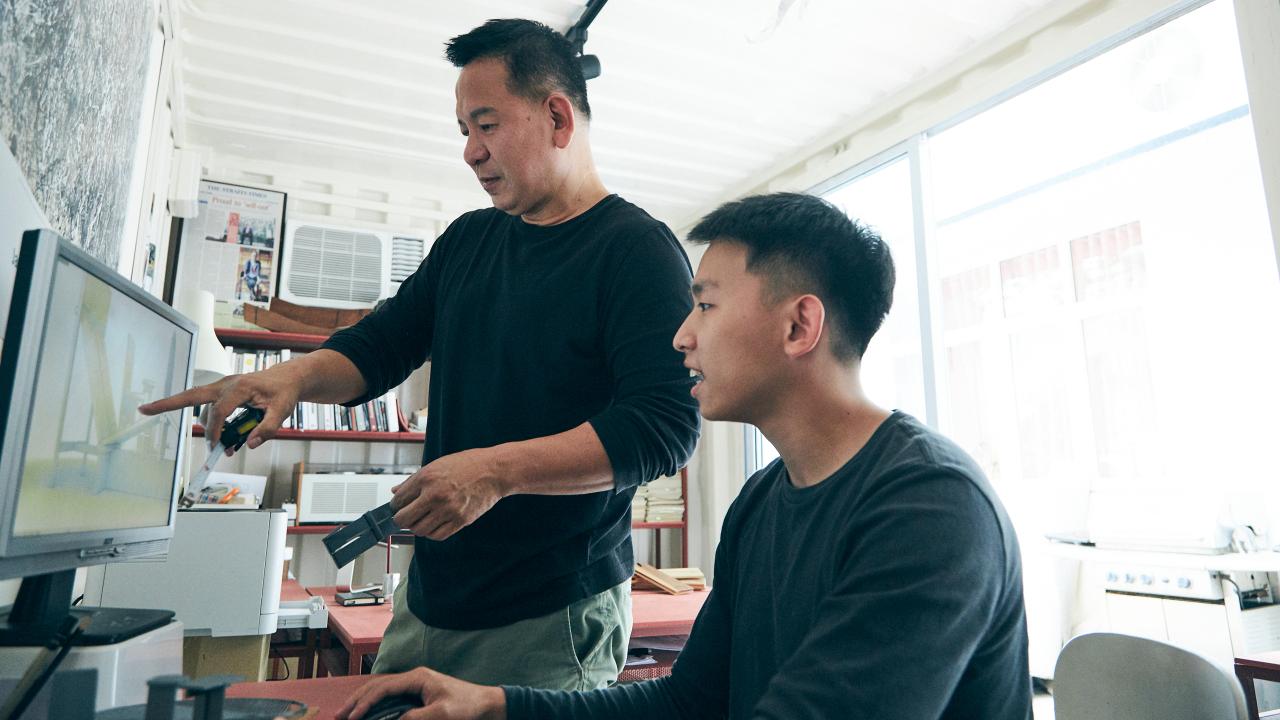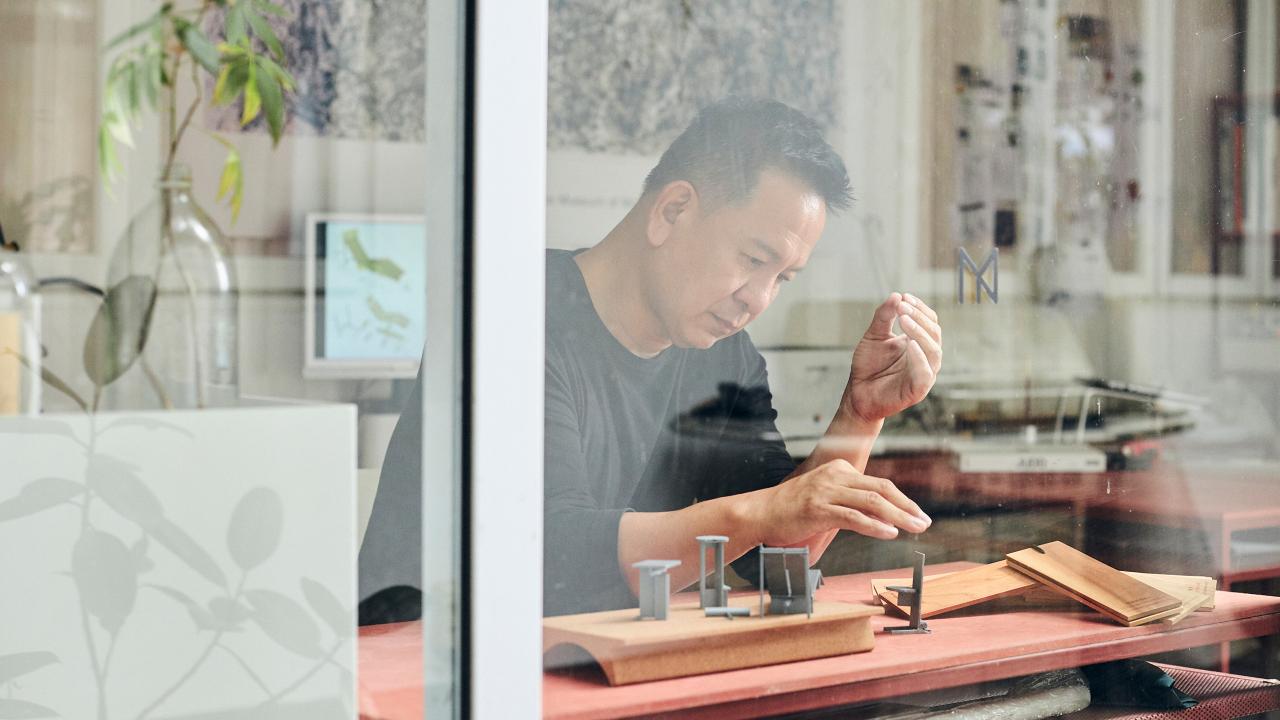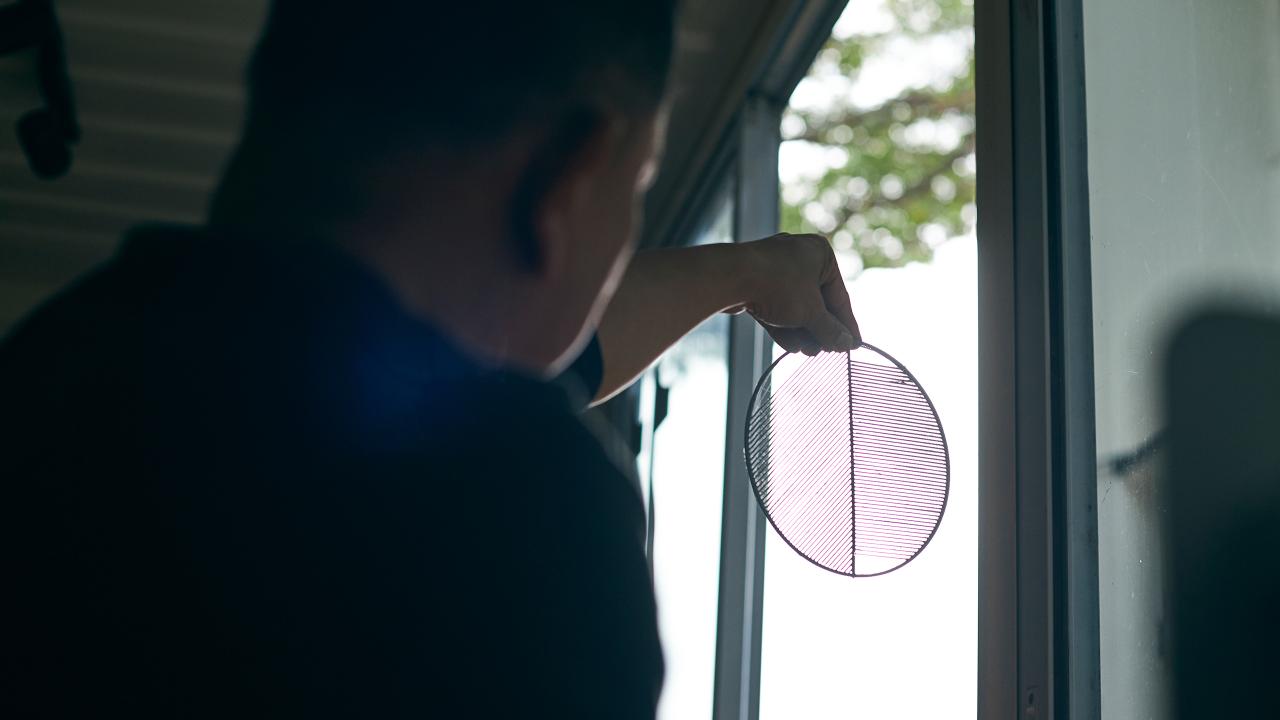AHEC collaborated with Nathan Yong for Lifecycles. Earning the moniker ‘the godfather of Singporean design’ from his long and successful career in the industry, Yong has achieved commercial success without compromising his distinctive and sophisticated aesthetic. He uses his furniture design as a means of exploration for artistic endeavours. He takes a very clear position on the current state of design and its consumption: “When people consume stuff, they don’t always appreciate the true value of any object, it tends to be a transaction between the cost and what it can do for them. I would like to reinvestigate that relationship through artistic pieces that let people question the real value of objects for them, for nature, for communities and the good of the planet”. This is precisely what he has looked to achieve through his latest collaboration.
I want to stir people’s understanding of what is beauty? What is ugly? What is function? What is value? What is Design? What is Art? What is good or bad? I want people to question their belief system” says Nathan Yong. Lifecycles sets out to challenge convention. “It should start with a feeling of strangeness. Why is it built that way? What is the point of it? I hope our curious minds will lead us to understand and appreciate the things around us more, be they natural or manmade”.
Yong has taken a deliberatively provocative approach to this collection, taking his lead from the theory of constructivism which emerged in the field of education during the 20th century, with its roots traced back to the works of Jean Piaget in the 1920s and Lev Vygotsky in the 1930s. It focused on the importance of sociocultural learning; how interactions with adults, more capable peers, and cognitive tools are internalised by learners to form mental constructs through the zone of proximal development.
Specifically, Yong likens his approach to this project to Vsevolod Meyerhold's Constructivist theatre, a revolutionary approach to stage design and performance that aimed to break away from traditional forms and embrace the principles of constructivism. It emphasises the active participation of both actors and audience in the creation and interpretation of their experience, aligning with the belief that individuals construct meaning through their engagement with the environment and social interactions.
It is hoped that this project also provokes an examination of what it means to design sustainably. To disrupt the audience into reflection. Yong says of his aim: “"To just design beautiful pieces of furniture for this project would be an easy but lazy approach. In order to make people interested and willing to educate themselves on the issues of sustainability and responsible consumption, I took the educational approach of constructivism, letting people figure out things themselves through their own exploration and analysis”.




